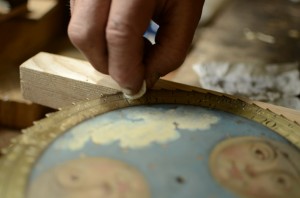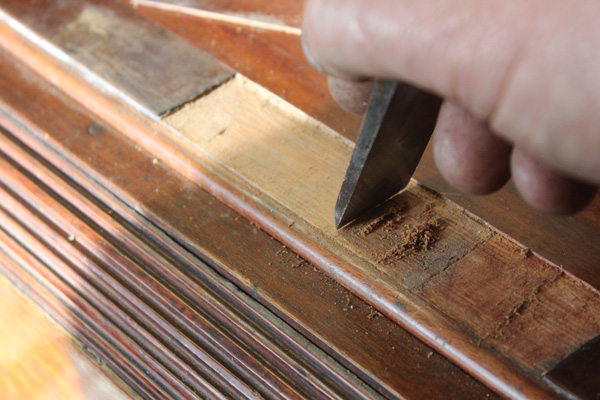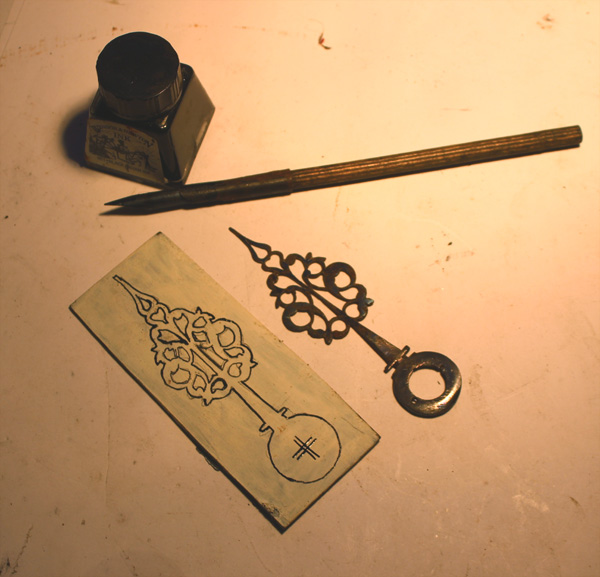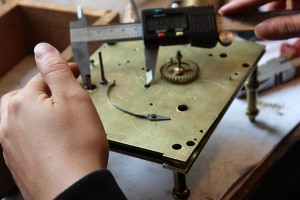Clock Repair / Clock Restoration / Clock Conservation
– Let’s be clear about the words
Restoration means returning a piece to some former state but not necessarily as it was when originally made – that would be Renovation. (Which we don’t do) There is no such thing as restoration to museum standards: Museums preserve and conserve they do not restore.
So Conservation means preserving the sense and integrity of what remains, saving it for the future enlightenment of mankind.
Restorers often encounter pieces of clocks deserving of conservation. The restorer has a professional obligation to advise and inform his client.
The practice of conservation also implies a more formal approach to documentation, record keeping and procedures for agreeing any work that will alter the piece, with the client and/or any interested parties.
CLOCK CASES
We perform all kinds of restoration and conservation work on clock cases. Materials that we deal with may be woods, stone, metal – basically anything. Any clock case is thoroughly examined and recorded before cleaning, restoration or conservation work is commenced.
Sometimes clock restoration work just requires the removal of years of grime.
CLOCK HANDS
Clock hands get damaged, lose their finishes and get dirt and paint on them. They might be made out of brass or various grades of steel and in clock restoration they need to be professionally handled. We clean, restore and replace all kind of clock hands: Apart from making brass hands to any design we can make high carbon steel hands, including heat treatment to achieve the traditional iridescent blue colour.
CLOCK DIALS
 Clock dials can be made from a wide variety of materials, brass, iron, enameled copper even wood. The restoration or conservation of applied paint on iron and brass dials is a particularly important aspect of clock restoration.
Clock dials can be made from a wide variety of materials, brass, iron, enameled copper even wood. The restoration or conservation of applied paint on iron and brass dials is a particularly important aspect of clock restoration.
MOVEMENTS
Like all mechanical things, clock movements wear, get dirt and dust in them, lubricating oils and greases dry out and weight lines, chains and springs sometimes need to be replaced. Teeth can broke off, parts go missing and the ticks go out of beat.
Any old clock carries with it a legacy of previous repair work – some good, some less so. It is not for us to judge, only to deal with what is there in the best possible way.
Find out more




